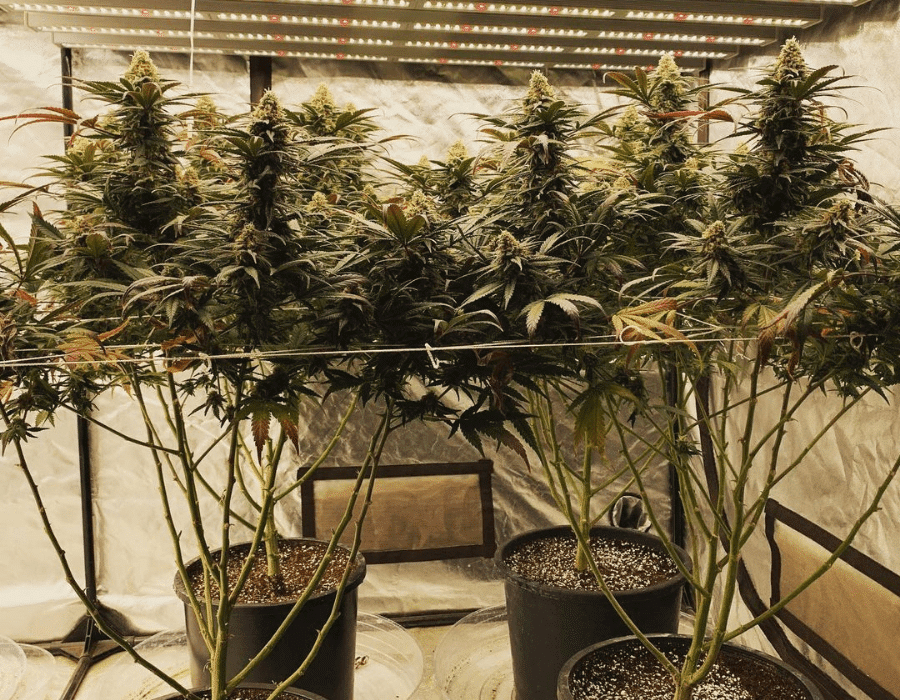Lollipopping is a low-impact and relatively simple pruning technique that can significantly increase yields. The name is derived from the defoliation (or removal) of bushy growth and fan leaves near the end of a cannabis plant’s vegetative stage, which concentrates its limited resources towards producing larger flowers in its canopy.
This gives plants a “lollipop” appearance, with bare stalks and lower branches culminating in dense and delicious colas made juicier by redirecting the plant’s energy.
Growers without substantial side grow lights in their tents or grow spaces may find lollipopping cannabis attractive as a way of maximising light penetration to their plants. Yield is increased as the number of bud sites receiving light is reduced, concentrating light exposure to more productive parts of the plant. The opportunity for small popcorn buds that usually develop below the canopy and end up as B-grade stash (or lower) is removed.
Benefits of Lollipopping
Cannabis plants respond exceptionally favourably to any increased light exposure to their bud sites. This stimulates the plant’s photochemical production (chemical processes based around the absorption of light), resulting in stronger concentrations of cannabinoids such as THC and CBD, the desirable “loud” terpene profiles, and large, resinous buds that growers desire.
The grower also increases airflow below the canopy when they lollipop their plants. This reduces the risk of any fungal pathogens such as mould. Removing lower, larger leaves wanting for light also reduces overall humidity and disease vectors and redirects energy towards flowering.
Cultivators can develop a better eye for their plants’ health by using the lollipopping technique. This can lead to several positive results, such as identification of pests and viruses as well as identifying desired traits in a crop. It will also inform the grower about their plant’s characteristics during the veg stage, which is useful for assessing whether or not to grow the same strain in the future.
Lollipopping Methods
Pruning cannabis plants is a time-consuming and rewarding process. Growers should be delicate and decisive so as not to stress or damage their plants needlessly. Lollipopping can be accomplished either by hand (wearing nitrile gloves is suggested) or using sharp scissors (it is recommended that growers disinfect scissors between plants or change gloves if pruning by hand to mitigate the spread of viruses).
Before lollipopping, the grower should assess their crop for any plants that are more disease-prone than the rest or have had periods of slow growth. Lollipopping, as with other pruning methods, will remove nutrient-rich leaves needed by the plant to continue growing and, as such, will place the plants under stress. Any plants that have made slow recoveries from stressors are not ideal for lollipopping or perhaps should be pruned sparingly.
A helpful tip to help growers decide when to lollipop their plants is to observe the plants as they reach the final stages of their veg phase. Are there any portions beneath the canopy that are entirely in shadow? If so, any leaves and young bud sites shaded in their plants’ lower parts are good candidates to be pruned.
